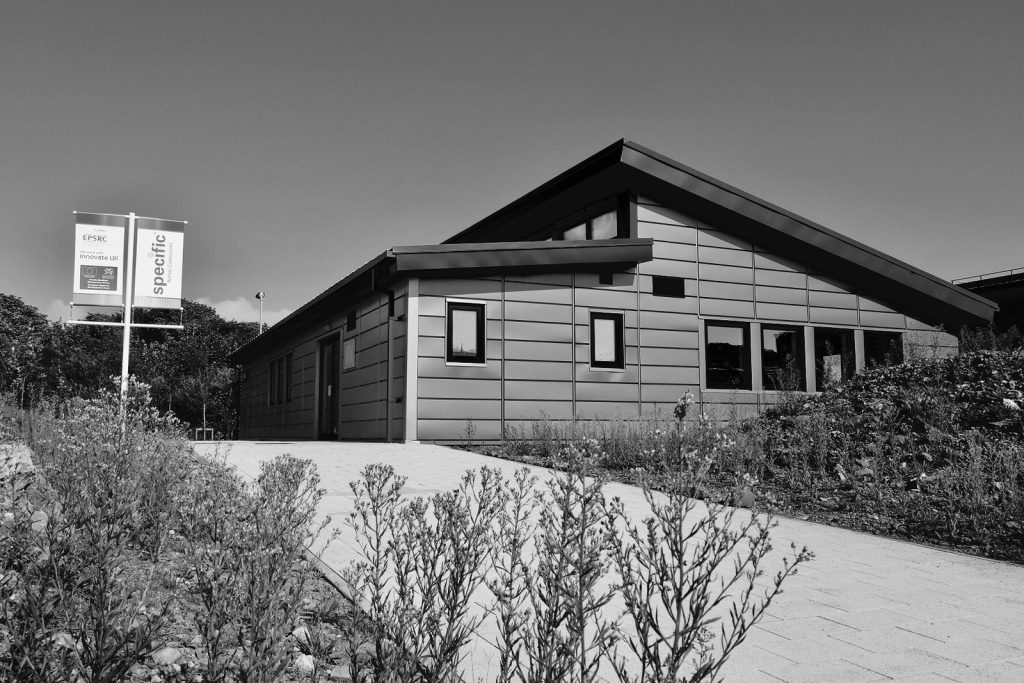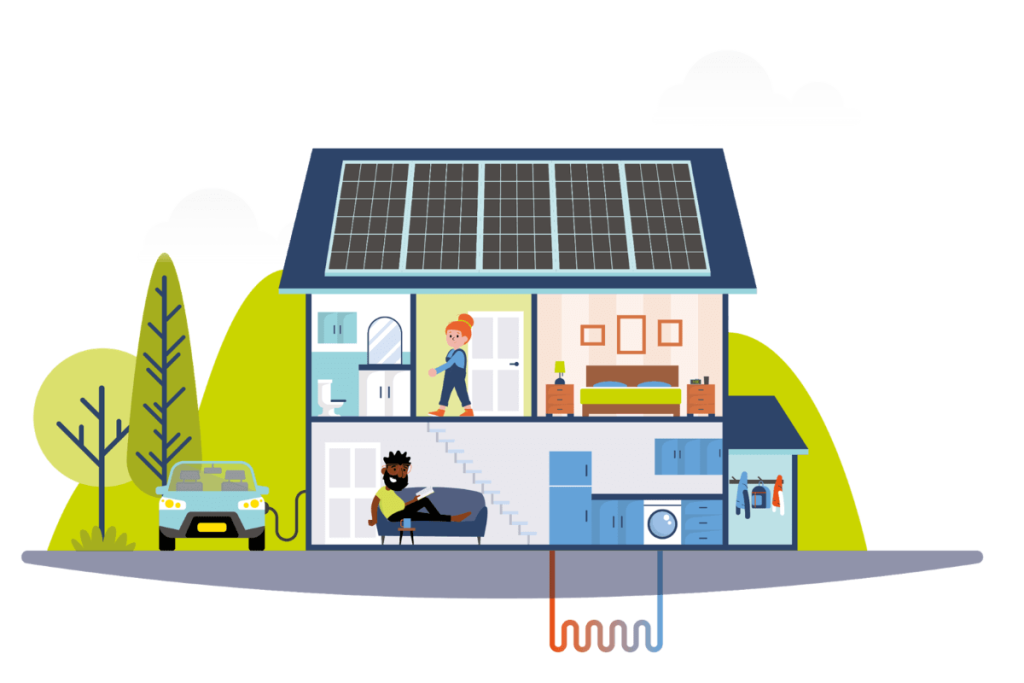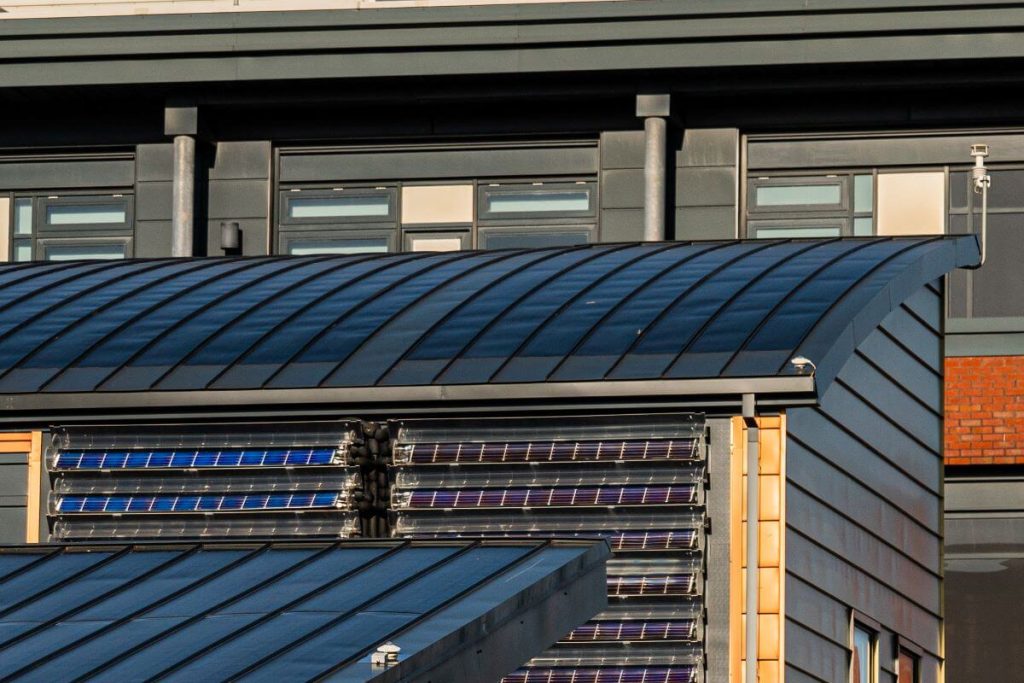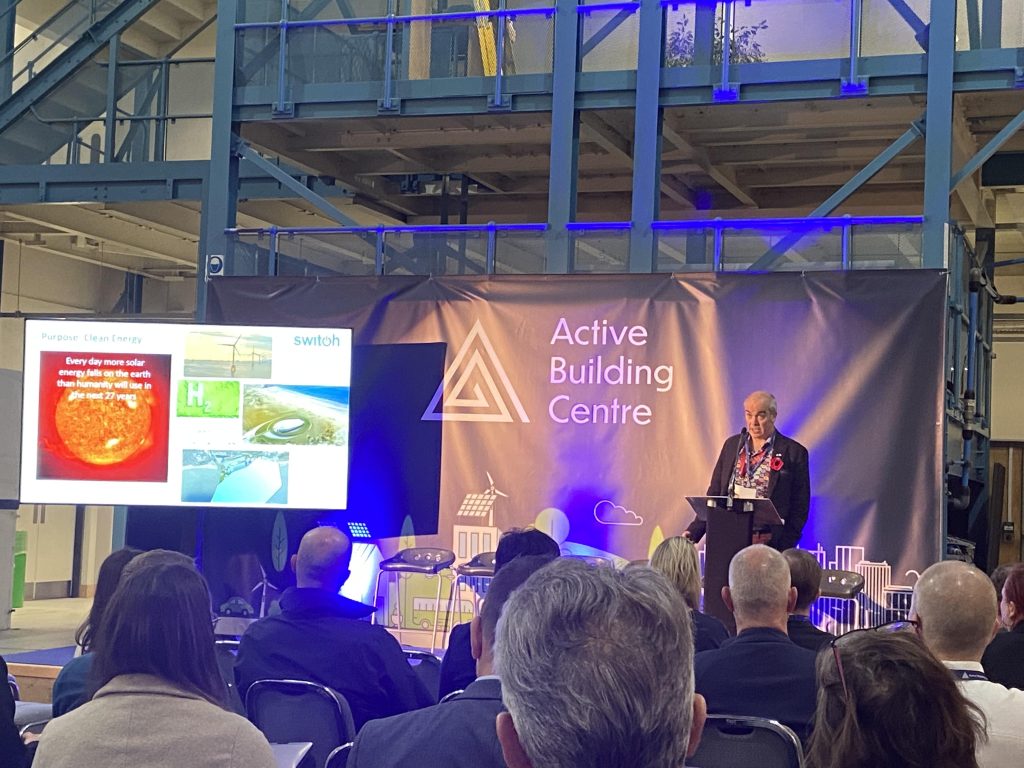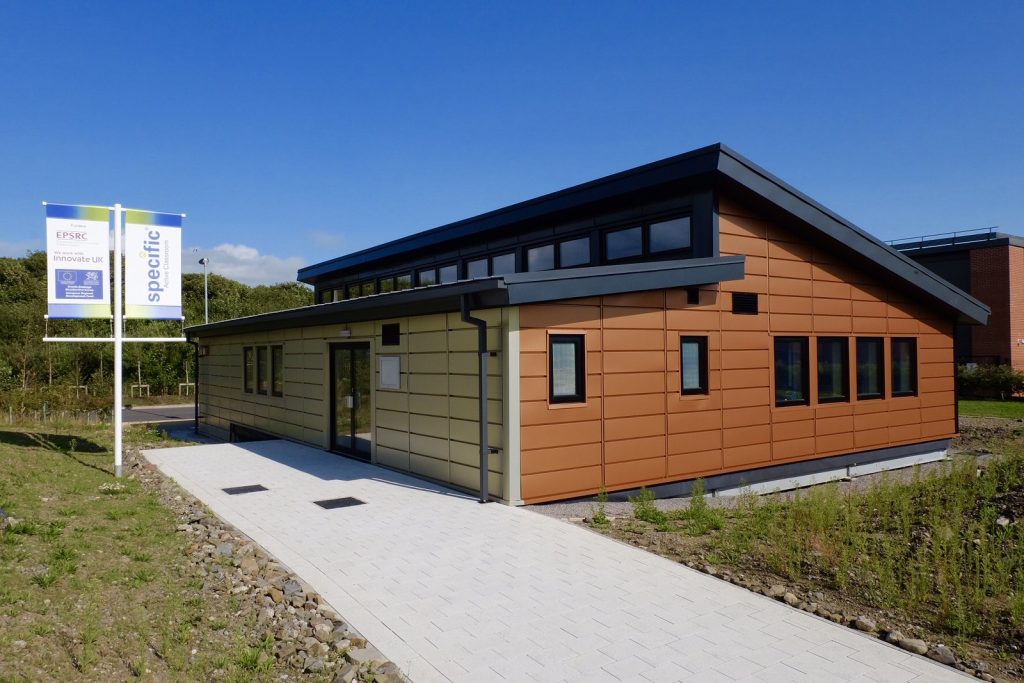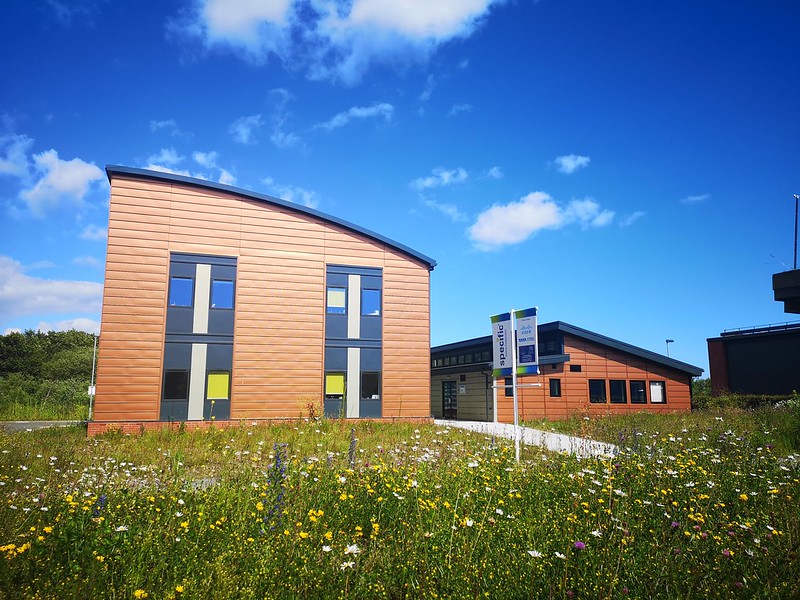
What Are Active Buildings?
An Active Building is described as “a building that supports the wider grid network by intelligently integrating renewable energy technologies for heat, power and transport.” It also has six core principles:
- Building fabric and passive design – integrated engineering and architecture design approach including consideration of orientation and massing, fabric efficiency, natural daylight and natural ventilation. Designed for occupant comfort and low energy by following passive design principles.
- Energy efficient systems with performance monitoring – intelligently controlled & energy efficient systems to minimise loads – HVAC, lighting, vertical transportation. Data capture via inbuilt monitoring to enable performance validation, optimisation and refinement of predictive control strategies; including dissemination of performance data to building occupants.
- On-site renewable energy generation – renewable energy generation to be incorporated where appropriate. Renewable technologies should be selected holistically, given site conditions and building load profiles combining, where applicable both photovoltaic and solar thermal technologies.
- Energy storage – thermal and electrical storage should be considered to mitigate peak demand, reduce the requirement to oversize systems, and enable greater control, with a view to supporting the local infrastructure through time shifting of demand and controlled export; and enabling flexible control to enable virtual power plant integration.
- Electric vehicle integration – where appropriate Active Buildings integrate electric vehicle charging. Combined Charge Systems (CCS) with local control and the option of either virtual power plant (VPP) aggregated control or frequency response should be considered. As technology develops, bi-directional charging will allow electric vehicles to deliver energy to buildings as required, participate in demand side response and work with the wider building control systems.
- Intelligently manage integration with micro-grids & national energy network – in addition to intelligent controls, Active Buildings manage their interaction with wider energy networks, e.g. demand side response, load shifting & predictive control methods, aiming to minimise uncontrolled import or export of energy by effectively utilising the storage assets.
A single Active Building combines a range of integrated renewable energy technologies, which work together in one system to generate, store and release heat and electricity.
Therefore, using data from the building, the national grid and electric vehicles, the system can manage and optimise energy performance.
Conversely, although Active Buildings can be self-sufficient, they are not designed to operate in isolation. In fact, they use their ability to generate and store energy to exchange or trade with other buildings, the national grid or electric vehicles. This creates communities of energy that are more resilient to sudden changes in supply or demand.
How do Active Buildings benefit consumers and society?
- Firstly, reduced energy consumption – independent modelled has shown they can reduce consumption by about 60% for the average UK home.
- Secondly, lower fuel bills – the same modelling demonstrated that fuel bills could be reduced by over £600 for the average UK home.
- Lower carbon emissions, supporting the UK’s Clean Growth Strategy, which sets out proposals for decarbonising all sectors of the UK economy, including construction and energy, over the next decade.
- Energy independence – building owners and users are able to have control of their own supply. This leads to less dependence on national networks and fosters corporate, political and economic stability.
- A flat load profile – which promotes grid stability. The novel feature of Active Buildings is their ability to function together as part of a de-centralised power distribution system through utilisation of energy storage and smart controls.
- And finally, the opportunity for demand side response or energy balancing services (i.e. the ability to respond quickly to unexpected events in the national electricity network)
The Active Building Toolkit by Design Manager, Joanna Clarke:
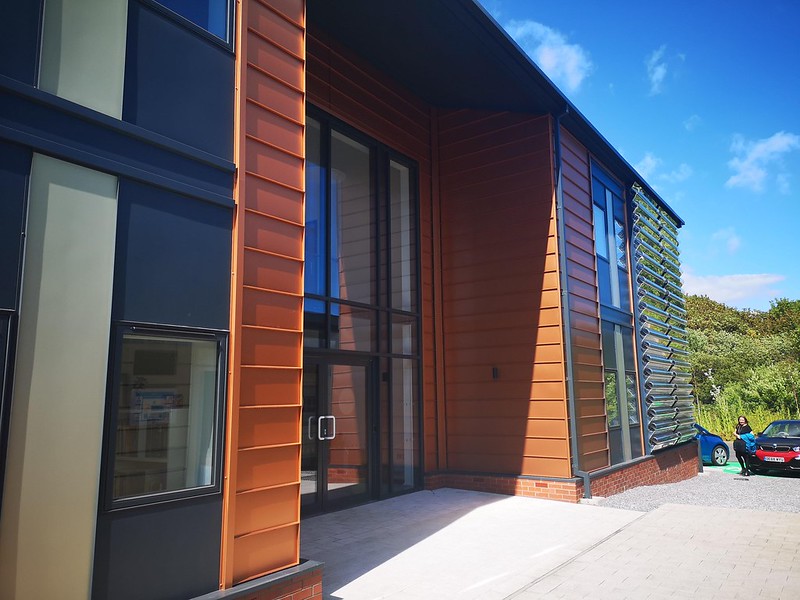
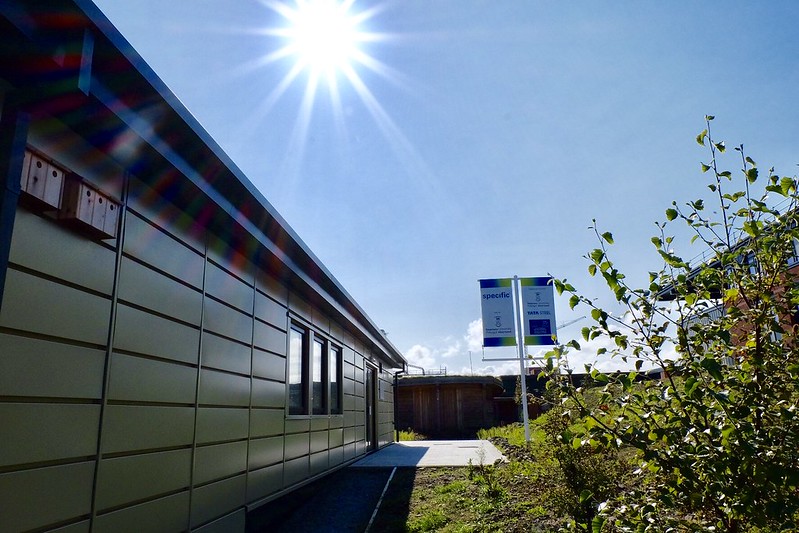
The time to tackle climate change through improving the performance of our buildings has never been more critical. The ‘Active Buildings Toolkit’ has been developed by Design Manager, Joanna Clarke, to share the principles and learnings from the Active Buildings, with the aim of encouraging others to adopt or improve on them and to support wider uptake of low carbon designs.
Please feel free to feedback any comments you have, and let us know if you can use it on any of your building projects:
The Latest Building Demonstrator News:
Using the Active Classroom to Assess Design for Disassembly Buildings
The Active Classroom was designed to be disassembled: most of its main components can be…
New Young Person’s Guide to Active Buildings
Our new Active Building Guide will help young people to consider the impact of buildings…
An Economic Analysis of the Active Office’s Integrated PV and Batteries
In a new paper, Dr Guangling Zhao and colleagues undertook an economic analysis of the…
SPECIFIC featured in flagship Net Zero report
SPECIFIC’s Active Classroom has been featured in the first Royal Anniversary Trust report, which outlines…
The Active Building Centre Showcase Demonstrated the Need and Opportunity For Delivering Low Carbon Buildings
As world leaders convened in Sharm El-Sheikh for COP27, it was fantastic to take part…
The Future of the Active Classroom: Deconstructability of Buildings for a Circular Economy
We will soon have to say a fond farewell to our Active Classroom on the…
